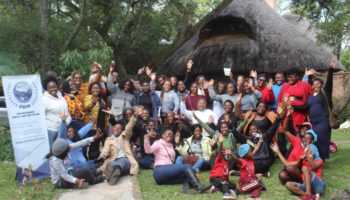The report below was produced by ZIMTRADE and gives you helpful advice on investment opportunities in Zambia.
Zambia has experienced strong economic growth in recent years, with the country being classified as one the fastest growing economies in Sub-Saharan Africa. Real GDP growth was recorded at more than 6% per year between 2005 and 2013, with the main drivers of growth being mining, construction and financial services. Privatisation of government-owned copper mines in the 1990s relieved the government from covering mammoth losses generated by the industry and greatly increased copper mining output and profitability to spur economic growth.
The country operates an open market economy whereby the business environment is facilitative of trade and investment for both local and foreign players. The Government also encourages and facilitates joint venture partnerships between local and foreign companies in the prioritised sectors.
The construction sector is growing and there is apparent activity around the country in the building of infrastructure, including construction of roads, hotels, shopping malls, and housing projects, among others.
Resource endowment
Zambia is endowed with various mineral deposits. Copper, cobalt, lead and zinc are the most developed. Zambia has about 6% of the world’s known copper reserves. Other minerals found in Zambia include: gold, nickel, iron and uranium. There are also gemstones such as emeralds, aquamarine, and amethyst. Zambia’s energy sector is endowed with enormous energy resources which include coal, hydropower, woodlands and forests as well as other renewable energy forms such as solar and wind. Zambia’s vast expanses of rich undeveloped land with free-flowing and easily accessible water provide extensive potential for agriculture production.
Priority Sectors of the Government of Zambia
The Government of Zambia is eager to diversify into other economic activities in order to reduce dependence on copper.
Considered as one of the most attractive destinations for investment in Africa, the sectors deemed to be the most profitable for investment and currently prioritised by the Zambian Government are: agriculture, manufacturing, energy, tourism and mining.
• Mining – opportunities for mining equipment, components and ancillary services to the mines • Agriculture – there are vast expanses of agricultural land provided in blocks for farming • Construction – a budget of K5.6 billion has been set aside for the construction of roads in the 2015 financial year. • Energy – new entrants into the sector are being facilitated by banks. • Manufacturing – the sector is growing with new industries in the timber, wood and furniture sector, food and packaging sector among others being set up.
Agriculture
Zambia has vast fertile agricultural land. It is estimated that Zambia has 33,500 square kilometres of arable land. Agriculture remains the key priority sector in the growth and poverty reduction agenda of Zambia. Agriculture employs above 70% of the rural population.
Opportunities that are available include the supply of farming implements such as the hand-held, ox-drawn, tractor drawn implements, irrigation equipment and related technology, treated wooden poles for game and farm fencing in line with needs to con-trol diseases. The agriculture sector also presents opportunities in
Executive Summary
Extension services and livestock breeding such as cattle, goats and sheep. There are also opportunities in the supply of pest control for crops and veterinary services.
Tourism
This sector has a rich natural heritage, including waterfalls, rivers, lakes and a wealth of wildlife roaming in its vast sanctuaries. The most stunning geographical feature is the Victoria Falls on the southern border with Zimbabwe and is one of the natural wonders of the world. Zambia has nineteen (19) national parks and thirtyfour (34) game reserves which include the Luangwa and Kafue National Parks, Lower Zambezi National Park, Victoria Falls and Mosi-Oa-Tunya National Park among others.
The abundance of these natural resources offers opportunities for Zimbabwean players in the tourism sector to enter into joint venture investment partnerships with Zambian entities as well as to facilitate skills transfer and development.
Manufacturing
More than 90% of Zambia’s inputs are, imported, either in raw form or at the intermediate stage of processing, thus presenting opportunities for the supply of these inputs. With more than 70% of the population sustained by agriculture, agro-processing is a major priority. This scenario presents fertile ground for value chain development in areas such as leather, edible oil extraction, stock feeds and beverages, etc.
The Government efforts in supporting the manufacturing sector presents opportunities including plastic manufacturing companies in Zimbabwe to supply plastic packaging, shrinkable sleeves for different sizes, foil tops for sealing the bottles and multi-layered plastic film for extended milk shelf life with oxygen barrier.
Human Capital
In Zambia and the region as a whole, Zimbabweans are renowned for having specialist artisanal skills and expertise in several fields such as brick laying, carpentry, plumbing, tiling, thatching as well as boiler-making, quantity surveying, among other skills. Zimbabwean skills, work culture, hospitality and professionalism are also very well respected in the hospi-tality sector. Opportunities and good prospects for various professions in these re-ferred fields can be taken advantage of as opportunities exist and need to be explored.
Financing and Exchange Controls
Commercial Banks in Zambia offer various services to businesses such as Letters of Credit, Trade Finance, project finance and also fostering of partnerships and matchmaking, among others. Some of the notable international banks operating in Zambia include Barclays Bank, Banc ABC, Stanbic and Standard Chartered Bank. In addition, with the emergence of a significant middle-class, there is need for new products and services provided by specialised financial institutions.
Zambia is one of the few countries that do not have exchange controls, hence profit and trade remittances are easily facilitated by the banks.
Trade prospects and opportunities for Zimbabwe
Zambian Market
Zambia has a relatively large domestic market comprising a population size of about 14.6 million (2014 estimate). It is a growing economy and politically stable environment. In the SADC region, Zambia’s major trading partner is South Africa which accounts for about 60% of Zambia’s trade. Further, Zambia’s central location offers trading opportunities with all the eight (8) surrounding countries, which include Zimbabwe. Huge trade opportunities also exist through agreements/membership to COMESA and SADC.
Zambia’s principal imports
Some of the major products imported by Zambia in 2014 included: machinery ores, slag and ash, mineral fuels, vehicles, electrical, electronic equipment, and articles of iron and steel. The main regional trading partner for Zambia is South Africa and the Democratic Republic of Congo; Zimbabwe currently accounts for less than 2% of Zambia’s total import bill, despite the proximity.
The trade, economic and political relations between Zimbabwe and Zambia are very cordial and conducive for the development of greater economic cooperation through trade and investment.
The recent retail sector infrastructure developments in Lusaka and the Copperbelt has opened greater avenues for the supply of some of the manufactured products entering duty free into Zambia under COMESA or SADC arrangements.
Investment opportunities
Opportunities for investment can be identified in agriculture, horticulture, poultry, animal husbandry, property development (residential, commercial and industrial), timber processing, infrastructure development, tourism (lodges and hotels) and technical assistance/capacity building (skills development).
Recommendations
The study recommends a redoubling of efforts by Zimbabwean companies to take advantage of and to benefit from the growth of the Zambian economy. The proximity of Zimbabwe to Zambia and belonging to the two regional bodies SADC and COMESA is not reflected in the export volumes which represent less than 2% of Zambia’s total import bill.
The study further recommends a medium to long-term strategic approach by Zimbabwean businesses if they are to maximise returns and to develop beneficial relationships with their Zambian counterparts. Zimbabwe remains with goodwill in the Zambian market despite some of the previously supplied well-known brands having disappeared from the Zambian market.
![]()





